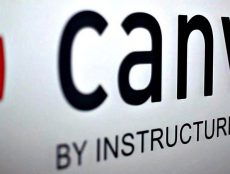
Articles
Industry News
In Med School, VR Has the Potential to Bridge the Gap Between Theory and Practice
By Henry Kronk
September 21, 2017
While it was a novelty just a few years ago, companies and universities routinely use virtual reality headsets for education. From flight simulators to KFC fry cook training, VR allows future professionals to undergo a risk-free trial of what they will be asked to perform in potentially high-stress situations.
As of this semester, 1st year med students at the University of California San Francisco will try the latest application of VR technology: anatomy. Instructors have built a VR component into their curriculum that seeks to fill in any gaps left between their textbooks and their work with cadavers.
The new program is a kind of video game. As students don the Oculus Rift headset, they see a skinless human body suspended before them. Students have the ability to pull apart tissue, remove entire muscles, detach sections of bone, and see how everything fits together before their eyes.
Halfway Between Theory and Practice
Cadavers—being dead—paint a pretty good picture but do not display the bodily systems in the same way that a living person does. Textbooks, meanwhile, can only describe our anatomical structures.
“Our instructors do an amazing job, but at the same time it is difficult to get an entire three-dimensional picture of what is going on,” said Jordan Holler, a student currently using the technology, according to the UCSF News Center.
The VR training module addresses one of the biggest issues in medical education today: how to bridge the gap between theory and practice. According to researcher Yan-Li Shi, this issue is unique to medical education.
“The bottleneck of [teaching medicine] lies in the difficulty of expressing many abstract teaching contents and obtaining many practical teaching contents and emotional experience in the course of teaching,” Shi said in a lecture presentation of her research.
Instructors are also getting excited about the latest improvement to their curriculum.
“Virtual reality is exciting for me as an anatomy instructor because it is going to help enhance the students’ understanding of the arrangement of the body,” said Derek Harmon, an assistant professor of Anatomy, according to USCF. “Because the better they know the body, the better physicians they will end up being for the rest of their careers.”
Room for Growth
 Compared to its potential, the VR anatomy program at UCSF is just a skeleton. Instructors envision a more complete program which places students in a virtual operating room to depict the stressful and dynamic situations involving traumatic injuries.
Compared to its potential, the VR anatomy program at UCSF is just a skeleton. Instructors envision a more complete program which places students in a virtual operating room to depict the stressful and dynamic situations involving traumatic injuries.
“It is hard to simulate a realistic trauma experience where nobody is going to get hurt,” said Kimberley Topp, a professor of Physical Therapy and Anatomy, according to UCSF. The VR program provides a solution to that problem.
Other instructors foresee a program that would depict a doctor’s appointment. The virtual patient will display specific symptoms which relate to specific diseases, and even exhibit different personalities or behaviors that make the practice of medicine varied and difficult.
One of the greatest benefits of the VR program is that it renews and refreshes student engagement. At the end of the day, learning about the incredible intricacies of the human body in a stress- and mess-free environment is fun.
Other Uses of VR
The UCSF is not the first time VR technology that has been used to treat medicine. In 2016, Professor Shafi Ahmed filmed a surgical cancer procedure with two Mativision 360 degree cameras. 13,000 med students from around the world watched with the ability to pan around the room as Dr. Ahmed worked.
“As a champion of new technology in medicine, I believe that virtual and augmented reality can revolutionize surgical education and training, particularly for developing countries that don’t have the resources and facilities of [advanced] hospitals,” Ahmed said, according to the Huffington Post.
This is only the tip of the iceberg when it comes to VR in medicine. Besides its use as an educational tool, many researchers also use it as a form of treatment. A separate initiative at UCSF, for example, has been in progress at the Benioff Children’s Hospital in Oakland. Along with KindVR, the company that designed the experience, the VR headsets are programed with a stress-relieving interactive experience to help kids cope with invasive surgeries or procedures. More initiatives are doubtless just around the corner.









[…] features, Instructure was operating under new ownership and leadership. The formerly public company was acquired by the private equity firm Thoma Bravo in March. The initial offer met with significant shareholder opposition. Former CEO Dan Goldsmith stood to […]